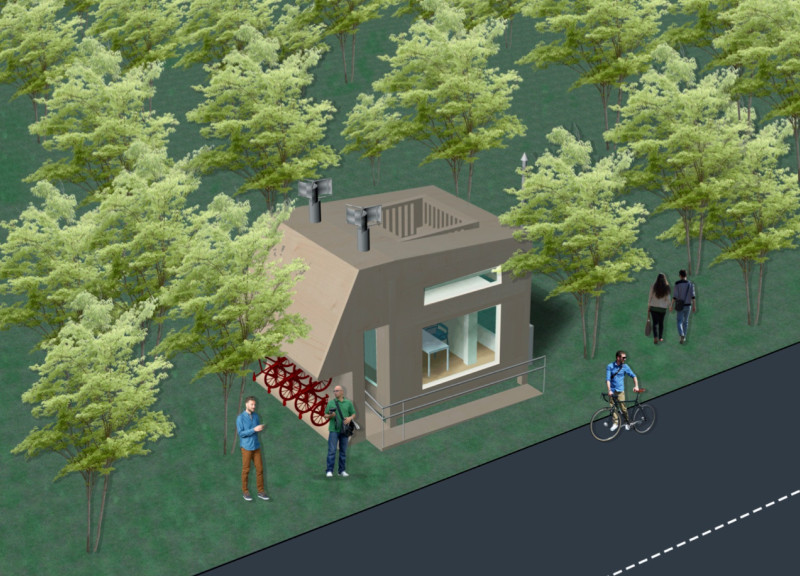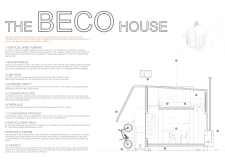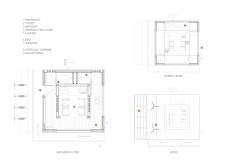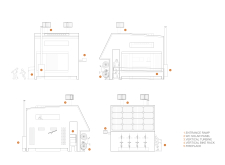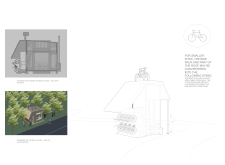5 key facts about this project
The Beco House is a temporary, off-grid housing solution that is designed to fit various terrains. It serves as a living space for up to four residents and focuses on sustainability and self-sufficiency. The overall design aims to create minimal environmental impact while providing a comfortable and functional home.
Energy Generation and Sustainability
The design features a vertical wind turbine that effectively converts wind energy into electricity. It can operate regardless of wind direction, allowing for energy generation even at low wind speeds. This setup significantly contributes to the house's energy independence. Complementing this, solar panels have been installed on the south-facing roof to provide additional power, particularly for heating water and lighting. Together, these elements highlight a strong commitment to using renewable energy.
Materiality and Construction
The Beco House is primarily made of plywood panels and a timber framework. This choice of materials is both practical and allows for easy assembly and disassembly. The design prioritizes durability while also accommodating the temporary nature of the dwelling. The construction process is straightforward, facilitating quick transport and installation in various locations.
Interior Layout and Functionality
Inside, the layout is designed to maximize efficiency and comfort. There is a central cooking area that includes a counter, sink, and hob, creating a space for meals and social interaction. Small storage cavities near each bed provide convenient space for personal items. The inclusion of a fireplace allows for coal storage that enhances warmth and comfort. Additionally, clean water tanks are discreetly placed beneath the house, making plumbing connections easily accessible.
The central daylight atrium brings in natural light and warmth, enriching the living experience while enabling stargazing at night. This design feature ties the indoor space to its natural surroundings, making it feel open and connected to the outdoors.


